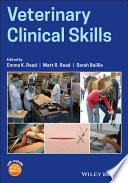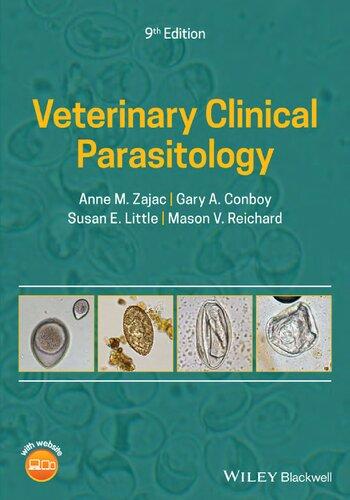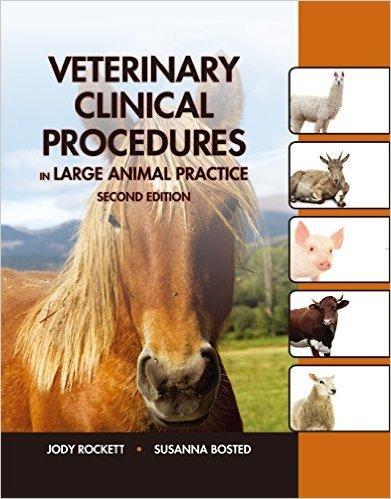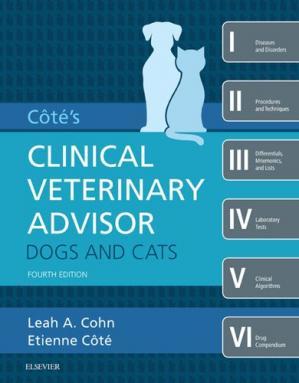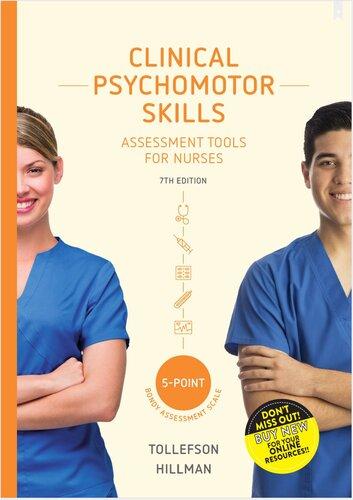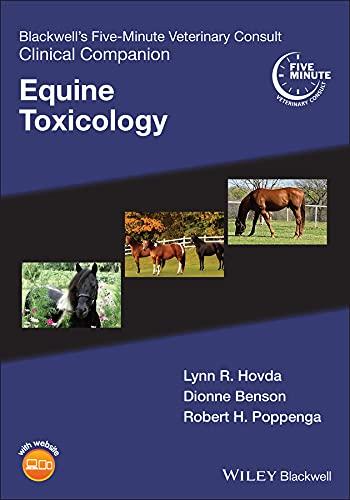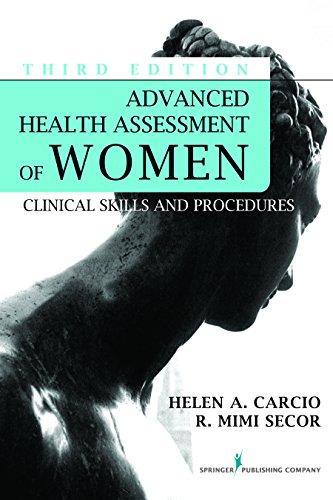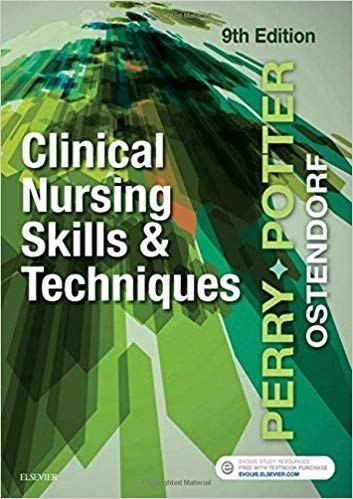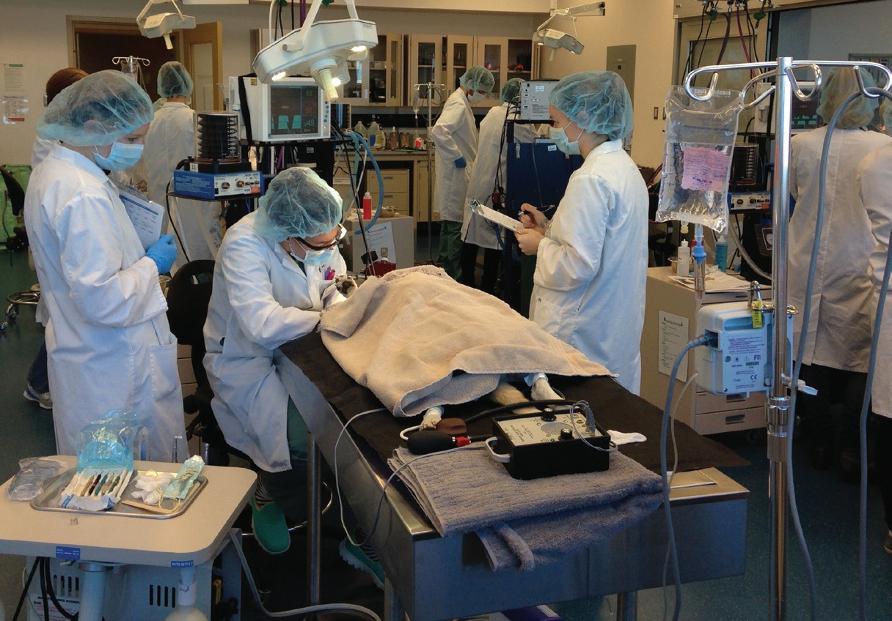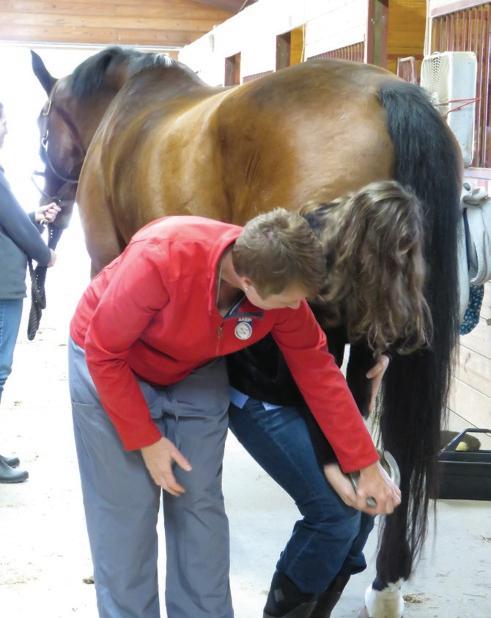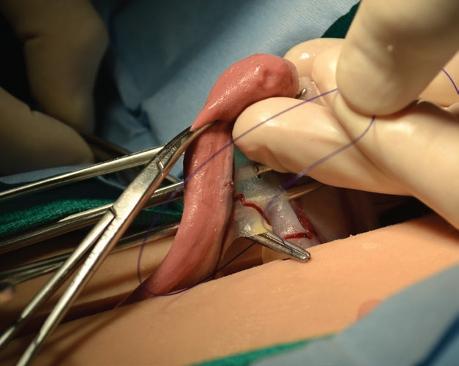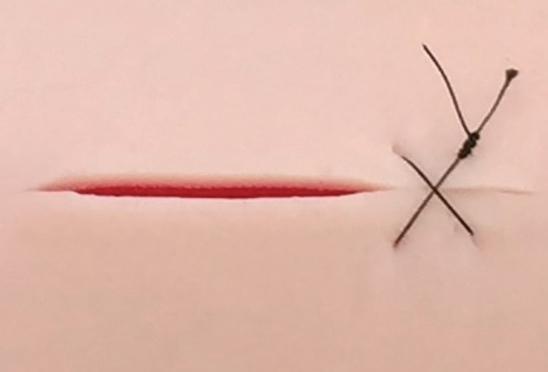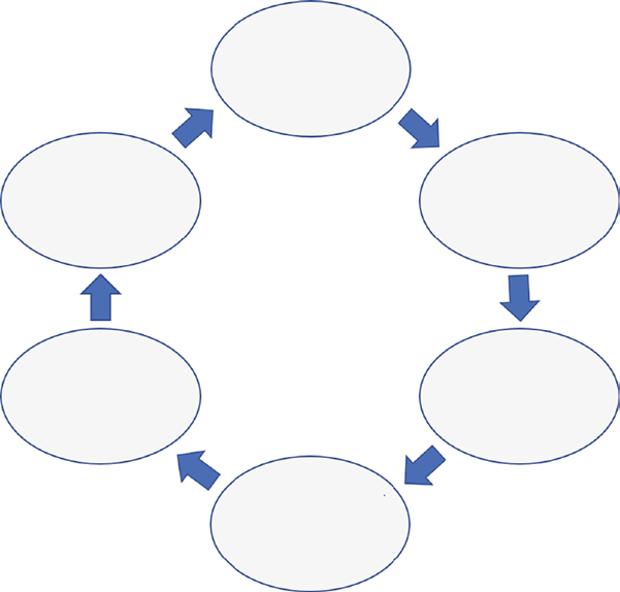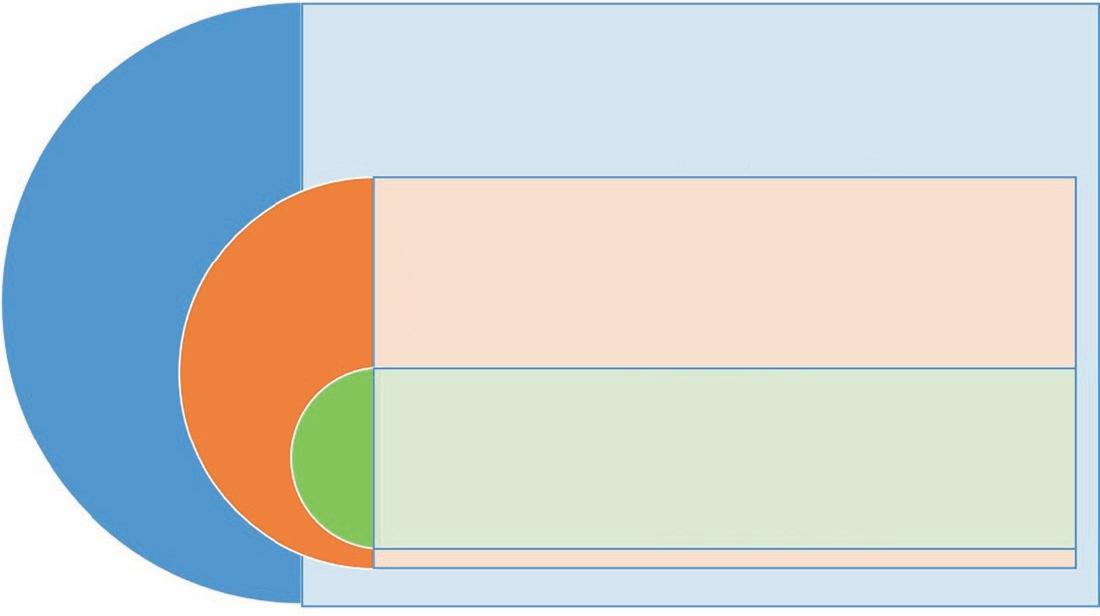Veterinary Clinical Skills
Edited by Emma K. Read,
DVM, MVSc, DACVS
College of Veterinary Medicine, The Ohio State University Columbus, OH, USA
Matt R. Read, DVM, MVSc, DACVAA
MedVet, Worthington, OH, USA
Sarah Baillie, BVSc, PhD, MRCVS
Bristol Veterinary School, University of Bristol Bristol, UK
Booksvets.blogspot.com
This edition first published 2022 © 2022 John Wiley & Sons, Inc.
All rights reserved. No part of this publication may be reproduced, stored in a retrieval system, or transmitted, in any form or by any means, electronic, mechanical, photocopying, recording or otherwise, except as permitted by law. Advice on how to obtain permission to reuse material from this title is available at http://www.wiley.com/go/permissions.
The right of Emma K. Read, Matt R. Read, and Sarah Baillie to be identified as the authors of the editorial material in this work has been asserted in accordance with law.
Registered Office
John Wiley & Sons, Inc., 111 River Street, Hoboken, NJ 07030, USA
Editorial Office
111 River Street, Hoboken, NJ 07030, USA
For details of our global editorial offices, customer services, and more information about Wiley products visit us at www.wiley.com.
Wiley also publishes its books in a variety of electronic formats and by print-on-demand. Some content that appears in standard print versions of this book may not be available in other formats.
Limit of Liability/Disclaimer of Warranty
The contents of this work are intended to further general scientific research, understanding, and discussion only and are not intended and should not be relied upon as recommending or promoting scientific method, diagnosis, or treatment by physicians for any particular patient. In view of ongoing research, equipment modifications, changes in governmental regulations, and the constant flow of information relating to the use of medicines, equipment, and devices, the reader is urged to review and evaluate the information provided in the package insert or instructions for each medicine, equipment, or device for, among other things, any changes in the instructions or indication of usage and for added warnings and precautions. While the publisher and authors have used their best efforts in preparing this work, they make no representations or warranties with respect to the accuracy or completeness of the contents of this work and specifically disclaim all warranties, including without limitation any implied warranties of merchantability or fitness for a particular purpose. No warranty may be created or extended by sales representatives, written sales materials or promotional statements for this work. The fact that an organization, website, or product is referred to in this work as a citation and/or potential source of further information does not mean that the publisher and authors endorse the information or services the organization, website, or product may provide or recommendations it may make. This work is sold with the understanding that the publisher is not engaged in rendering professional services. The advice and strategies contained herein may not be suitable for your situation. You should consult with a specialist where appropriate. Further, readers should be aware that websites listed in this work may have changed or disappeared between when this work was written and when it is read. Neither the publisher nor authors shall be liable for any loss of profit or any other commercial damages, including but not limited to special, incidental, consequential, or other damages.
Library of Congress Cataloging-in-Publication Data
Names: Read, Emma K., editor. | Read, Matt R., editor. | Baillie, Sarah, editor.
Title: Veterinary clinical skills / edited by Emma K. Read, Matt R. Read, Sarah Baillie.
Description: First edition. | Hoboken, NJ : John Wiley & Sons, Inc., 2022.
Identifiers: LCCN 2021032454 (print) | LCCN 2021032455 (ebook) | ISBN 9781119540052 (paperback) | ISBN 9781119540144 (adobe pdf) | ISBN 9781119540151 (epub)
Subjects: MESH: Education, Veterinary | Clinical Competence
Classification: LCC SF756.3 (print) | LCC SF756.3 (ebook) | NLM SF 756.3 | DDC 636.089/0711–dc23
LC record available at https://lccn.loc.gov/2021032454
LC ebook record available at https://lccn.loc.gov/2021032455
Cover Design: Wiley
Cover Images: © Emma K. Read, Matt R. Read
Set in 9.5/12.5pt STIXTwoText by Straive, Pondicherry, India
10 9 8 7 6 5 4 3 2 1
Contents
Acknowledgments viii
List of Contributors ix
Preface xii
About the Companion Website xiii
1 What Is a Clinical Skill? 1
Emma K. Read and Sarah Baillie
2 Clinical Skills Curricula: How Are They Determined, Designed, and Implemented? 7
Jennifer Hodgson, Elrien Scheepers, and Sarah Baillie
3 How Are Clinical Skills Taught? 25
Sarah Baillie, Matt R. Read, and Emma K. Read
4 How Are Clinical Skills Practiced? 45
Emma K. Read and Robin Farrell
5 How Do I Know if I am Learning What I Need to? 62
Sheena Warman and Emma K. Read
6 How Do I Prepare for Assessment and How Do I Know I Am Being Assessed Fairly? 82
Kate Cobb and Sarah Cripps
7 How Can I Best Learn in a Simulated Environment? 98
Julie A. Hunt, Stacy L. Anderson, and Jennifer T. Johnson
8 How Do I Make Use of Peer Teaching? 113
Lucy Squire and Marc Dilly
9 What Other Skills Are Vital to Successful Clinical Practice? 127
Elizabeth Armitage-Chan and Susan M. Matthew
Appendix 1: OSCEs (Objective Structured Clinical Examinations) 142
Making a Cheese and Pickle Sandwich 144
Sarah Baillie, Rachel Harris, and Emma K. Read
Asepsis – Gowning and Closed Gloving 146
Tatiana Motta and Emma K. Read
Asepsis – Draping 151
Tatiana Motta
Bovine Anatomy and Surgical Landmarks - Part One 156
Jennifer Schleining
Bovine Anatomy and Surgical Landmarks - Part Two 157
Jennifer Schleining
Canine Physical Exam 158
Steven Horvath and Missy Matusicky
Surgical Towel Placement Rubric 163
Abi Taylor
Pedicle Ligature (two-handed tie) Rubric 164
Abi Taylor
Equine Handling & Restraint 165
Teresa Burns and Emma K. Read
Intramuscular Injection in a Canine Model 170
Julie Williamson
Anesthetic Maching Set-Up and Leak Testing 172
Matt R. Read and Carolina Ricco Pereira
Appendix 2: Recipes for Making Clinical Skills Models 175
Canine Castration Model 176
Lindsey Ramirez, Megan Preston, and Julie Hunt
Dental Scaling Model 181
Rachel Harris, Andrew Gardiner, and Rachel Lumbis
Endotracheal Intubation Model 186
Maire O’Reilly
Equine Abdominocentesis Model 190
Catherine May, Catherine Werners, Keshia John, Sarah Baillie, and Emma K. Read
Canine Leg with Cephalic Vein Model 194
Lissann Wolfe
Silicone Skin Suturing Model 198
Marc Dilly
SimSpay Model 201
Rikke Langebæk
Surgical Prep Model 208
Jean-Yin Tan and Alfredo E. Romero
Tea Towel Suturing Model 213
Alison Catterall
Index 217
Acknowledgments
This work would not have been possible without the contributions of many colleagues with whom we have worked over the years. We are grateful to the efforts of so many talented instructors and staff members in making our clinical skills training programs a reality. We are also delighted to have had the opportunity to watch our learners grow and mature into competent and caring practitioners. Thank you to them for taking care of the profession, animals, and their owners on a daily basis. Your work is difficult and vitally important.
We would also like to recognize the team at Wiley, specifically Erica Judisch and Merryl Le Roux. We have enjoyed working with you and appreciate your tremendous support on this project since from the beginning.
Emma
Thanks to my parents and family members who always supported me and helped me to achieve my career aspirations by encouraging me to work hard and seek out broad opportunities to learn. Thanks to my husband Matt for his unfailing support of all my projects and dreams, and for being my rock along the way.
To our co-editor, Sarah, a special thanks for being such a wonderful collaborator and friend over the years. We feel very fortunate to have met you and have really enjoyed working with you ever since.
To Grace and Kate, thank you above all else. You are the light of our lives. Words can’t express the
love we have for you or our admiration for the people you are. Your patience with our many work hours, projects, and life changes are so appreciated. We love you with all our hearts. Chase your dreams with all your being – we are here for you!
Matt
For my incredible wife, Emma, for having the vision and passion to create this book despite everything else going on around us. I learn something new from you every single day. But enough with the summative assessments already!
For our two daughters, Grace and Kate. I am looking forward to again using evenings and weekends for the things you want to do! You are simply amazing and I am so thankful to be your dad.
And to my parents and friends who have supported and helped me through thick and thin. Life can be hard, but you make it easier.
Sarah
Thanks to Emma for inviting me to join this project, it is one of many we have collaborated on over the years. It has been a pleasure as always. Thanks to my husband John who is so supportive in so many ways in all my endeavors at work and at home. And finally this book, and my ongoing enthusiasm for “all things” clinical skills, wouldn’t be such fun without all the help from my colleagues in the clinical skills lab team at Bristol.
List of Contributors
Stacy L. Anderson
College of Veterinary Medicine
Lincoln Memorial University
Harrogate, TN, USA
Elizabeth Armitage-Chan
LIVE Centre, Department of Clinical Sciences and Services
Royal Veterinary College Hatfield UK
Sarah Baillie
Bristol Veterinary School
University of Bristol Bristol, UK
Teresa Burns
College of Veterinary Medicine
The Ohio State University Columbus, OH USA
Alison Catterall
Bristol Veterinary School
University of Bristol Bristol UK
Kate Cobb
School of Veterinary Medicine and Science
University of Nottingham
Sutton Bonington UK
Sarah Cripps
School of Veterinary Medicine and Science
University of Nottingham
Sutton Bonington UK
Marc Dilly
Faculty of Veterinary Medicine Justus Liebig University Giessen Giessen
Germany
Robin Farrell UCD School of Veterinary Medicine
University College Dublin
Dublin Ireland
Andrew Gardiner
Royal (Dick) School of Veterinary Studies
University of Edinburgh Scotland UK
Rachel Harris
Bristol Veterinary School
University of Bristol
Bristol UK
Jennifer Hodgson
Virginia-Maryland College of Veterinary Medicine
Virginia Tech
Blacksburg, VA USA
Steven Horvath College of Veterinary Medicine
The Ohio State University Columbus, OH
USA
Julie A. Hunt College of Veterinary Medicine
Lincoln Memorial University Harrogate, TN USA
Keshia John School of Veterinary Medicine
St. George’s University Grenada West Indies
Jennifer T. Johnson College of Veterinary Medicine
Lincoln Memorial University Harrogate, TN USA
Rikke Langebæk Department of Veterinary Clinical Science University of Copenhagen Copenhagen Denmark
Rachel Lumbis Royal Veterinary College Hatfield UK
Susan M. Matthew Department of Veterinary Clinical Sciences, College of Veterinary Medicine
Washington State University Pullman, WA
USA
Missy Matusicky College of Veterinary Medicine
The Ohio State University Columbus, OH
USA
Catherine May Faculty of Veterinary Science University of Pretoria Pretoria, South Africa
Tatiana Motta College of Veterinary Medicine
The Ohio State University Columbus, OH USA
Máire O’Reilly University College Dublin Dublin Ireland
Carolina Ricco Pereira College of Veterinary Medicine
The Ohio State University Columbus, OH USA
Megan Preston College of Veterinary Medicine
Lincoln Memorial University Harrogate, TN USA
Lindsey Ramirez College of Veterinary Medicine
Lincoln Memorial University
Harrogate, TN USA
Emma K. Read College of Veterinary Medicine
The Ohio State University Columbus, OH USA
Matt R. Read MedVet Worthington, OH USA
Alfredo E. Romero Faculty of Veterinary Medicine University of Calgary Calgary, Alberta Canada
Elrien Scheepers
Faculty of Veterinary Science
University of Pretoria Pretoria, RSA
Jennifer Schleining
College of Veterinary Medicine & Biomedical Sciences
Texas A&M University College Station, TX USA
Lucy Squire
Bristol Veterinary School, University of Bristol Bristol UK
Jean-Yin Tan
Faculty of Veterinary Medicine University of Calgary Calgary, Alberta Canada
Abi Taylor
College of Veterinary Medicine
North Carolina State University Raleigh, NC USA
Sheena Warman
Bristol Veterinary School, University of Bristol Bristol UK
Catherine Werners School of Veterinary Medicine St. George’s University Grenada
West Indies
Lissann Wolfe
School of Veterinary Medicine
College of Medical, Veterinary & Life Sciences
University of Glasgow Glasgow UK
Preface
Our original vision for this book was to try to collate the content of many years of conversations that we have had with colleagues and students about Clinical Skills teaching and learning into a single, useful resource. Many of those discussions centered around what is known about how to teach and learn better –in essence, where to spend one’s precious time, effort, and resources in order to see the best returns. To this end, we wanted to create a book that would appeal to both instructors and students and provide a broad overview of what is already known about teaching and learning Clinical Skills for those starting out so they had a good base from which to take the leap. We have been fortunate to help institute modern clinical skills training programs into our own institutions at a time when they were just beginning to be implemented across veterinary medicine. In the early days, we learned by trial and error by adapting “hard knocks” lessons we had learned in private practice to our academic learning environments. As programs evolved, so did the research that proves that there is value in learning how to use best teaching practices to inform Clinical Skills instruction. However, even though so much has been published, clinical skills instructors are a generous group and much of the sharing of information still tends to be open source or available by simply asking a colleague. Websites, conferences, and Zoom calls all serve as a means for sharing what we have learned, making sure that someone else does not have to reinvent the wheel.
The basis for this book is that, despite all of the sharing of ideas and best practices that has occurred to date (or maybe as a result of it!), it can still be challenging for instructors and students to review what has been documented about teaching and learning Clinical Skills in one concise place. New instructors often feel overwhelmed with all there is to know about teaching and assessment and, although many teachers may not be new to veterinary medicine or to teaching Clinical Skills, it is the evidence-based teaching of others that is novel and challenging. Students tackling clinical skills training are often overwhelmed with where to begin and how best to practice the huge volume of skills and procedures that a veterinarian needs to be able to perform following graduation. Although handbooks have been published that list skills and explain “how to” perform a variety of procedures, a concise reference that summarizes all that is known about teaching, learning, and assessing clinical skills all in one place has still been missing.
We hope that this book helps point newbies of all types in the right direction while also serving as a go-to reference for experienced teachers. The enthusiasm and dedication to clinical skills training is as evident now as it was when it started over 10 years ago and we are immensely grateful to all of the authors who participated in this project and shared their expertise and experiences so openly. Together, we look forward to further innovations that will make even more confident and competent day-one graduates who will be better prepared to treat the animals in their care.
About
the Companion Website
This book is accompanied by a companion website:
Booksvets.blogspot.com
There you will find valuable material designed to enhance your learning, including:
● Appendices 1 and 2 from the book as downloadable PDF
What Is a Clinical Skill?
Emma K. Read1 and Sarah Baillie2
1 College of Veterinary Medicine, The Ohio State University, Columbus, OH, USA
2 Bristol Veterinary School, University of Bristol, Bristol, UK
Historically in veterinary medicine, degree programs have been based upon the Flexner model described in medical education, with two basic blocks: two to three years of preclinical training and one to two years of clinical training (Flexner, 1910). Approximately 10–15 years ago, a trend developed in veterinary education to include more hands-on training during veterinary programs, often beginning in the start of the first year, with an emphasis on teaching dayone skills necessary for success in practice (Hubbell et al., 2008; Doucet and Vrins, 2009; Welsh et al., 2009; Smeak et al., 2012; Dilly et al., 2017 RCVS, 2020;). The idea of moving clinical training earlier in the program and further emphasizing integration of knowledge and other skills into the clinical workplace led to current veterinary programs being more like two inverse wedges rather than two blocks placed one on top of the other as separate units of the same program (Figure 1.1).
Formal veterinary clinical skills training programs, which emphasized the use of models and simulators and constructed dedicated clinical skills centers for teaching, began in the early to mid-2000s as a way to accommodate this need for earlier training (Baillie et al., 2005; Scalese and Issenberg, 2005; Pirkelbauer et al., 2008; Read and Hecker, 2013; Dilly et al., 2017). Reports of
objective structured clinical examinations (OSCEs) that are used to assess learners’ handson skills, and descriptions of best practices for implementing skills curricula, began to follow (Smeak, 2007; Rhind et al., 2008; May and Head, 2010; Hecker et al., 2010; Read and Hecker, 2013; Dilly et al., 2017).
Concurrently, over the last 10 years, there has been a recognition of the need to incorporate more professional skills training (NAVMEC, 2011; Cake et al., 2016). Today’s employers are not only searching for confidence and technical competence in new graduates but good communication abilities as well (Perrin, 2019). Rather than simply being competent in one’s hands-on skills alone, effective integration of professional communication and technical skills performance is crucial for successful practice (NAVMEC, 2011; Rhind et al., 2011). Other “marketable skills” described in a recent report of the characteristics most often sought by employers posting job advertisements in the United Kingdom included enthusiasm, special interest, communication, allrounder, client care, team player, autonomous, caring, ambitious, and high clinical standards (Perrin, 2019). These “skills” are important to employers and are key to minimizing dissonance and dissatisfaction for the graduates as well (May, 2015; Perrin, 2019).
Veterinary Clinical Skills, First Edition. Edited by Emma K. Read, Matt R. Read, and Sarah Baillie. © 2022 John Wiley & Sons, Inc. Published 2022 by John Wiley & Sons, Inc. Companion website: www.wiley.com/go/read/veterinary
Year 4
Clinical practice
Knowledge/ classroombased
Year 1
Figure 1.1 Flexner model (with separation between preclinical and clinical blocks) versus the more recent curricular models that are more like inverse wedges introducing clinical content earlier into the start of the curriculum.
The Royal College of Veterinary Surgeons (RCVS) Day One Competences and the American Association of Veterinary Medical Colleges’ (AAVMC) North American Veterinary Medical Education Consortium (NAVMEC) report are both recognized as early frameworks that defined competencies across a number of areas that lead to graduate success (NAVMEC, 2011 RCVS, 2020;). More recently, there have been other developments toward employability of new graduates and improved teaching of professional skills. The VetSet2Go project represents an international collaboration of educators (https://www.vetset2go.edu.au), who surveyed employers, clients, new graduates, and other stakeholders before combining this information with what was already published in the literature. The resulting white paper and framework have been used to guide development of resources, as well as tools for educators and learners (Cake et al., 2016; Hughes et al., 2018). This framework highlights professional identity formation, skills needed for practice career longevity, and development of resilience. More recently, outcomes-based frameworks have been described (Bok et al., 2011; Molgaard et al., 2019; Matthew et al., 2020). The AAVMC’s competencybased veterinary education (CBVE) framework is currently being considered and implemented across multiple international veterinary schools simultaneously, which brings exciting opportu-
nities for conducting comparative analysis of students and graduates across schools. Having a shared framework of competencies, entrustable professional activities, milestones, and terminology is critical for training educators, comparing learners, and generalizing results across programs (Molgaard et al., 2018a; Molgaard et al., 2018b; Salisbury et al., 2019). With schools historically only focusing on their own programs, this opportunity has not existed in veterinary medicine to date.
In the strictest sense, veterinary clinical skills are psychomotor tasks that can be assessed in a simulated environment (satisfying “shows how” on Miller’s pyramid of clinical competence) or within the actual clinical workplace (satisfying “does” on Miller’s pyramid of clinical competence, see Figure 5.1) (Miller, 1990). Obvious examples might include donning and doffing a surgical gown, suturing skin, performing venipuncture, safely restraining a patient, or performing a complete physical examination. But what about interpreting herd records, observing animal behavior, or designing an isolation facility? Recently, authors have argued that the pinnacle of Miller’s pyramid of clinical competence is not just related to technical skill competence as Miller originally described but is actually “is trusted” (to perform on one’s own) (ten Cate et al., 2020) or “is” (to incorporate the development of professional identity) (Cruess et al., 2016).
During curriculum development or program revision to incorporate further clinical skills training, there can be heated debate among educators and practitioners about what skills are the most necessary to teach, or even about what constitutes a “clinical skill.” Before the more recent rise of competency-based education, some educators and practitioners used Delphilike processes and developed lists of skills to be taught in veterinary programs such as Day 1 Skills, first published in 2002 (RCVS, 2020). These practitioners tended to focus on what they believed was important for their own daily practice and based the skills list on what might be needed for their particular geographical
location. Practitioners also focused on what they wished to be taught to students who were soon to become their employees and colleagues. Educators tended to focus more on their own areas of specialty and what they believed new graduates should be able to perform based on past teaching experience.
The more recently described competencybased approaches to education have tried to focus more on “outputs,” rather than only on “inputs” for determining what should be taught in the curriculum. The majority of veterinary graduates today will enter private small animal, first-opinion practice, and it has been suggested that educators focus on asking practitioners working in that environment what skills the graduate will need (Bain and Salois, 2019). It should be noted that a broad range of practices must be consulted because there are differences in equipment and personnel available from practice to practice. Surveys of practicing veterinarians engaged in performing authentic veterinary tasks in general practice have also proven critical to determining the frequency, importance, and perceived difficulty for performance of these skills (Hubbell et al., 2008; Doucet and Vrins, 2009; Smeak et al., 2012; Luby et al., 2013; Kreisler et al., 2019). Not being limited in licensure at present, veterinary graduates ultimately require a broad range of skills for commonly seen conditions and diseases of all the major domestic species, and they require different skills than a specialist working in a tertiary referral environment (May, 2015). It is critically important that information be gathered across all types of practice, and published surveys exist in the literature for skills in surgery, equine practice, bovine practice, and small animal practice (Hubbell et al., 2008; Doucet and Vrins, 2009; Smeak et al., 2012; Luby et al., 2013; Kreisler et al., 2019). These resources are very useful and essential to consult when considering what to incorporate into an educational program. Integration of clinical skills in the curriculum requires consideration of when to present the material and whether to integrate it with other
competencies. It is not enough for learners to learn the technical performance alone because without the knowledge of when to use the skill, when not to use the skill and how to modify the performance of the skill when needed, then the learner performs as a trained technician (Michels et al., 2012). The development of a veterinary professional requires that the learner has declarative or background knowledge, procedural knowledge about how to perform the skill, and can also apply diagnostic reasoning and clinical decision-making. In effect, developing a clinical skills program means achieving a comprehensive consensus on all of these aspects and not simply generating a list of skills (Michels et al., 2012).
Initially, the emphasis of outcomes-based education in the health professions was on the postgraduate learner, but more recently there has been a shift to incorporate undergraduate training as well (Ferguson et al., 2017). The competency-based educational approach supports the continual documented improvement of learner performance from novice to proficient and emphasizes training in the clinical workplace (Dreyfus, 2004). Assessment is becoming increasingly focused on a programmatic approach that includes multiple direct observations of student performance that are then integrated to provide a complete picture of learner competence (Bok et al., 2018; Norcini et al., 2018; van Melle et al., 2019).
The development of entrustable professional activities (EPAs) is ushering in a new era for skills training where students are ultimately encouraged to bring individual skills and competencies together in a comprehensive authentic workplace procedural performance (ten Cate, 2005). EPAs are activities that are performed in the workplace and offer a chance for observation and assessment. Assessors have a chance to observe “in the moment” and comment on the learner’s ability to perform tasks required in practice. The repetitious completion of such activities in the clinical veterinary teaching environment allows the trainee to grow and learn from the formative feedback provided to them. The AAVMC’s CBVE
working group recently defined nine different domains and 32 competencies in a framework, which represents consensus across a number of veterinary programs (Molgaard et al., 2018a; Molgaard et al., 2018b). The group then described eight EPAs that can be used for assessing and documenting learner development during the clinical years of the training program. Clinical skills training is now evaluated across programs through the use of OSCEs to assess introductory individual skills and short procedures in the years prior to clinical rotations, and EPAs and workplace-based assessments that evaluate more complex procedures or activities where multiple competencies need to be performed simultaneously in the clinical environment (Petersa et al., 2017; ten Cate et al., 2018; Molgaard et al., 2018b).
Programmatic assessment has recently been validated in veterinary medicine and shows that a change in performance is not simply due to variability between raters but is due to variance in learners’ growth (Bok et al., 2018). This is important because we can now demonstrate learner change over time and predict the rate at which mastery will occur (Pusic et al., 2015). Limitations of accreditation (e.g. American Veterianry Medical Association’s Council on Education mandating the maintenance of a four-year program) and reduced financial support (e.g. in the United States, many colleges have poor public support and rely heavily on tuition dollars) may mean that true time-independent advancement may prove challenging for veterinary programs.
References
Baillie, S., Crossan, A., Brewster, S., et al. 2005. Validation of a bovine rectal palpation simulator for training veterinary students. Stud Health Technol Inform, 111, 33–36. Bain, B., Salois, M. 2019. Employment, starting salaries, and educational indebtedness of year-2018 graduates of US veterinary medical colleges. J Am Vet Med Assoc, 254, 1061–1066.
In summary, veterinarians used to talk about “see one, do one, teach one,” but today this is no longer considered a valid approach to teaching and learning skills (Michels et al., 2012). Clinical skills teaching, learning, and assessment have evolved. There is a growing body of evidence regarding learning theories, teaching and assessment principles, and learner development that can be used to the advantage of learner, teacher, and other stakeholders. An abundance of research and scholarship has changed the way that educators teach and the way programs are designed. This book is intended to focus on teaching, learning, and assessment of clinical skills in the modern veterinary curriculum and is a resource guide for students, as well as their instructors. This book is written for both veterinary and veterinary nursing students and includes chapters regarding development of skills curriculum (Chapter 2), how skills are best taught and learned (Chapter 3), and how skills are best practiced prior to assessment (Chapter 4). Also included are chapters on how learners know if they are learning what they need to (Chapter 5), how learners know they are being assessed fairly (Chapter 6), how learners can best learn in a simulated environment (Chapter 7), how to make use of peer teachers (Chapter 8), and what other skills are vital to a successful practice career (Chapter 9). The appendices include examples of OSCE assessments and recipes for simple models that instructors and learners can use and make.
Bok, H., Jaarsma, D., Tenuissen, P., et al. 2011. Development and validation of a competency framework for veterinarians. J Vet Med Educ, 38, 262–269.
Bok, H., de Jong, L., O’Neill, T., et al. 2018. Validity evidence for programmatic assessment in competency-based education. Perspect Med Educ, 7, 362–372.
Cake, M., Bell, M., Williams, J., et al. 2016. Which professional (non-technical) competencies are most important to the success of graduate veterinarians? A Best Evidence Medical Education (BEME) systematic review: BEME guide no. 38. Med Teach, 38, 550–563.
Cruess, R. L., Cruess, S. R., Steinert, Y. 2016. Amending Millers’ pyramid to include professional identity formation. Acad Med, 91, 180–185.
Dilly, M., Read, E., Baillie, S. 2017. A survey of established veterinary clinical skills laboratories from Europe and North America: Present practices and recent developments. J Vet Med Educ, 44, 580–589.
Doucet, M., Vrins, A. 2009. The importance of knowledge, skills, and attitude attributes for veterinarians in clinical and non-clinical fields of practice: A survey of licensed veterinarians in Quebec, Canada. J Vet Med Educ, 36, 331–342.
Dreyfus, S. E. 2004. The five-stage model of adult skill acquisition. Bull Sci Technol Soc, 24, 177–181.
Ferguson, P., Caverzagie, K., Nousiainen, M., et al. 2017. Changing the culture of medical training: An important step toward the implementation of competency-based medical education. Med Teach, 39, 599–602.
Flexner, A. 1910. Medical education in the United States and Canada. Bull World Health Org, 80, 594–602, extracted from Bulletin Number 4 (1910) of the Carnegie Foundation for the Advancement of Teaching, New York. Hecker, K., Read, E., Vallevand, A., et al. 2010. Assessment of first-year veterinary students’ clinical skills using objective structured clinical examinations. J Vet Med Educ, 37, 395–402.
Hubbell, J., Savillle, W., Moore, R. 2008. Frequency of activities and procedures performed in private equine practice and proficiency expected of new veterinary school graduates. J Am Vet Med Assoc, 232, 42–46.
Hughes, K., Rhind, S., Mossop, L., et al. 2018. ‘Care about my animal, know your stuff and take me seriously’: United Kingdom and Australian clients’ views on the capabilities
most important in their veterinarians. Vet Rec, 183, 534.
Kreisler, R., Stackhouse, N., Graves, T. 2019. Arizona veterinarians’ perceptions of and consensus regarding skills, knowledge and attributes of day one veterinary graduates. J Vet Med Educ, 47, 365–377.
Luby, C., McIntyre, K., Jelinski, M. 2013. Skills required of dairy veterinarians in Western Canada: A survey of practicing veterinarians. Can Vet J, 54, 267–270.
Matthew, S. M., Bok, H. G, Chaney, K. P., et al. 2020. Collaborative development of a shared framework for competency- based veterinary education. J Vet Med Educ , 47, 578–593.
May, S. A., Head, S. D. 2010. Assessment of technical skills: Best practices. J Vet Med Educ, 37, 258–265.
May, S. A. 2015. Towards a scholarship of primary health care. Vet Rec, 176, 677.
Michels, M., Evans, D., Blok, G. 2012. What is a clinical skill? Searching for order in chaos through a modified Delphi process. Med Teach, 34, e573–e581.
Miller, G. E. 1990. The assessment of clinical skills/competence/performance. Acad Med, 65, S63–S67.
Molgaard, L., Hodgson, J., Bok, H., et al. 2018a. Competency-Based Veterinary Education: Part 1 - CBVE Framework. Washington, DC: Association of American Veterinary Medical Colleges.
Molgaard, L., Hodgson, J., Bok, H., et al. 2018b. Competency-Based Veterinary Education: Part 2 - Entrustable Professional Activities. Washington, DC: Association of American Veterinary Medical Colleges.
Molgaard, L. K., Chaney, K. P., Bok, H. G, et al. 2019. Development of core entrustable professional activities linked to a competencybased veterinary education framework. Med Teach, 41, 1404–1410.
NAVMEC. 2011. Roadmap for Veterinary Medical Education in the 21st century. Washington, DC: North American Veterinary Medical Education Consortium.
Norcini, J., Anderson, M., Bollela, V., et al. 2018. 2018 Consensus framework for good assessment. Med Teach, 40, 1102–1109.
Perrin, H. C. 2019. What are employers looking for in new veterinary graduates? A content analysis of UK veterinary job advertisements. J Vet Med Educ, 46, 21–27.
Petersa, H., Holzhausena, Y., Boscardinb, C., et al. 2017. Twelve tips for the implementation of EPAs for assessment and entrustment decisions. Med Teach, 39, 802–807.
Pirkelbauer, B., Pead, M., Probyn, P., et al. 2008. LIVE: The creation of an academy for veterinary education. J Vet Med Educ, 35, 567–572.
Pusic, M., Boutis, K., Hatala, R., et al. 2015. Learning curves in health professions education. Acad Med, 90, 1034–1042.
Read, E., Hecker, K. 2013. The development and delivery of a systematic veterinary clinical skills education program at the University of Calgary. J Veterinar Sci Technolo, S4, 004.
Rhind, S., Baillie, S., Brown, F., et al. 2008. Assessing competence in veterinary medical education: Where’s the evidence? J Vet Med Educ, 35, 407–411.
Rhind, S., Baillie, S., Kinnison, T., et al. 2011. The transition into veterinary practice: opinions of recent graduates and final year students. BMC Med Educ, 11, 64. Royal College of Veterinary Surgeons (RCVS). 2020. Day One Competences Statement. https://www.rcvs.org.uk/document-library/ day-one-competences-statement/ Accessed May 28, 2021.
Salisbury, S. K., Chaney, K. P., Ilkiw, J. E., et al. 2019. Competency-Based Veterinary Education:
Part 3 - Milestones. Washington, DC: Association of American Veterinary Medical Colleges.
Scalese, R. J., Issenberg, S. B. 2005. Effective use of simulations for the teaching and acquisition of veterinary professional and clinical skills. J Vet Med Educ, 32, 461–467.
Smeak, D. 2007. Teaching surgery to the veterinary novice: the Ohio State University experience. J Vet Med Educ, 34, 620–627.
Smeak, D., Hill, L., Lord, L., et al. 2012. Expected frequency of use and proficiency of core surgical skills in entry-level veterinary practice: 2009 ACVS core surgical skills diplomate survey results. Vet Surg, 41, 853–861.
ten Cate, O. 2005. Entrustability of professional activities and competency-based training. Med Educ, 39, 1243–1249.
ten Cate, O., Graafmans, L., Posthumus, I., et al. 2018. The EPA-based Utrecht undergraduate clinical curriculum: Development and implementation. Med Teach, 40, 506–513.
ten Cate, O., Carraccio, C., Damodaran, A., et al. 2020. Entrustment decision making: Extending Miller’s pyramid. Acad Med, online ahead of print. doi:https://doi.org/10.1097/ ACM.0000000000003800.
van Melle, E., Frank, J., Holmboe, E., et al. 2019. A core components framework for evaluating implementation of competency-based medical education. Acad Med, 94, 1002–1009.
Welsh, P., Jones, L., May, S., et al. 2009. Approaches to defining day-one competency: a framework for learning veterinary skills. Rev Sci Tech, 28, 771–777.
2
Clinical Skills Curricula: How Are They Determined, Designed, and Implemented?
Jennifer Hodgson1, Elrien Scheepers2, and Sarah Baillie3
1 Virginia-Maryland College of Veterinary Medicine, Virginia Tech, Blacksburg, VA, USA
2 Faculty of Veterinary Science, University of Pretoria, Pretoria, RSA
3 Bristol Veterinary School, University of Bristol, Bristol, UK
Box 2.1 Key Messages
● The same principles of general curricular design should be adhered to when designing or evaluating a clinical skills curriculum
● A six-step model developed by David Kern provides fundamental, yet flexible, principles of curricular design
● Student, societal, professional, and accreditation needs should be considered
● A backward design process, with initial attention to the desired outcomes, will focus curricular design
● A prioritized Day-One Competencies list and identified core Entrustable Professional Activities will further drive the design process
Introduction
The goal of veterinary curricula is to educate students to be optimally prepared to enter the veterinary profession with entry-level medical knowledge and appropriate mastery of an array of clinical skills (Read and Hecker, 2013; Dilly et al., 2017; Thomson et al., 2019; Duijn et al., 2020). Not only will the qualified veterinary
● Learning objectives for clinical skills must be as specific and measurable as possible
● A variety of educational methods may be used to teach clinical skills, which are not restricted to clinical skills laboratories or clinical settings
● Implementation of a clinical curriculum will depend on available resources, buy-in from stakeholders, and a properly planned management and roll-out plan
● Evaluation of the implemented clinical curriculum must be done early and repeated as needed
professional be expected to display knowledge and mastery of skills, but he or she will also have to function as part of the veterinary team, working with veterinary nursing professionals where both the veterinarian and veterinary nurse (or “vet tech”) have input into patient care and treatment (Kinnison et al., 2011). Good veterinary interprofessional practice may have benefits for the practice, the individual team members, the client, and
Veterinary Clinical Skills, First Edition. Edited by Emma K. Read, Matt R. Read, and Sarah Baillie. © 2022 John Wiley & Sons, Inc. Published 2022 by John Wiley & Sons, Inc.
Companion website: www.wiley.com/go/read/veterinary
the patient (Kinnison et al., 2014). It can, and should, be argued that this relationship between members of the professional team should be nurtured and developed from an early stage, ideally at the level of educating students. While published studies in interprofessional education interventions are sparse, it must be acknowledged that at teaching institutions where the two groups of students are educated together, opportunities for integrated curriculum design are ample and should be fostered. Even if these opportunities do not exist because of physical separation of teaching facilities, it must be kept in mind that there are many more similarities in designing clinical skills curriculum for veterinary and veterinary nursing/ veterinary technology students, than there are differences. This chapter will discuss processes in the design of clinical curricula that are similar for veterinary and veterinary nursing (or veterinary technology, as called in Australia and United States) students.
The veterinary degree, perhaps more than any of the other health science degrees, poses a challenge to curricular design due to the breadth of material that must be covered, expectations of the level of competence at graduation, and the variety of career options available to veterinarians. By recognizing the close correlation between the veterinary knowledge and clinical skills also expected of newly qualified veterinary nursing professionals, it follows that near-similar challenges are posed to the design of curricula for veterinary nurses.
Despite its importance, it is easy to slip into a pattern of ad hoc curricular development with little attention to desired outcomes (Schneiderhan et al., 2018). Therefore, contemporary veterinary curricula must refocus on the fundamental knowledge, skills and behaviors required of graduates and utilize modern methods grounded in educational theory to best achieve these (Hodgson and Ilkiw, 2017).
In the broadest sense, a curriculum is defined as the totality of student experiences that occur in the educational process (Wiles, 2009), but any planned educational experience is also considered to be an example of a curriculum (Kern et al., 2016) with
this latter definition being applicable for a section of a veterinary curriculum focused on clinical skills development. Although a clinical skills curriculum would not be the totality of veterinary training, the same principles of curricular design should be adhered to when developing, or evaluating, a clinical skills curriculum for veterinarians and veterinary nurses.
There are several fundamental tenets when approaching curricular design that have been well articulated by Kern (2016): “First, educational programs have aims or goals, whether or not they are clearly articulated. Second, medical educators have a professional and ethical obligation to meet the needs of their learners, patients and society. Third, medical educators should be held accountable for the outcomes of their interventions. And fourth, a logical, systematic approach to curricular development will help achieve these ends.”
To help achieve the last of these principles, Kern developed a six-step model for curricular development in medical education (Kern et al., 2016) (see Figure 2.1). This model will be used as a framework for this chapter as all the steps are equally relevant to a veterinary clinical skills curriculum, for both veterinary and veterinary nursing students, with some modifications for the different educational contexts. Further, these principles of curricular design are fundamental, yet flexible enough to yield different types of curricula in different hands, depending on the local environment and the available resources in which the clinical skills curriculum is developed.
Steps in Clinical Skills Curricular Design
Step 1: Needs Assessment and Statement
The prompts for the development or review of a clinical skills curriculum can be multifactorial including both extrinsic (e.g. accreditation) and intrinsic (e.g. student performance evaluations) factors. A needs assessment will help answer
Step 6: Evaluation
Step 5: Implementation
Step 1: Needs assessment & statement
Step 2: Determine & prioritize content
Kern’s six step model for curricular design
Step 3: Write goals & objective
Step 4: Select teaching / educational strategies & design
Kern’s six step model for curricular design. Source: Based on Kern et al., 2016.
“What are you trying to achieve, why is it important, and who will benefit?” The answers to these questions should point to the distinction between the current teaching content and strategies surrounding a learning need, and what should change about it (Kern et al., 2016).
At the start, it is wise to consider whose needs are the priority. This may start with learners’ needs (either skills or knowledge-based needs, readiness to learn, or time available for learning) but likely extends to the patients and communities whom the learner will be serving (Kern et al., 2016). Furthermore, when justifying changes to time or funding, an articulation of how this curriculum, or curricular change, might meet regulatory or board requirements may be useful (Schneiderhan et al., 2018). To help with this step, it may also be helpful to develop a Clinical Skills Development or Review committee, as this has been a successful strategy used by some veterinary colleges (Read and Hecker, 2013; Morin et al., 2020).
The mechanics of a needs assessment includes utilizing readily available information, as well as the collection of new information (Kern et al., 2016). The acquisition of this information can be structured (e.g. surveys), semi-structured (e.g. series of discussions with stakeholders), research/data-driven (data on learner’s performance or clinical quality data) or based on regulatory requirements (Schneiderhan et al., 2018). While a needs assessment will differ between institutions, there is some information available for veterinary clinical skills that may help inform this process.
Student Needs
Feedback from faculty, staff, and veterinary and veterinary nursing students may help indicate the students’ needs for clinical skills review and revision. In a recent review by Malone (2019), it was noted that while graduating students do show improvement in confidence and competence from the start of the clinical year, they
Figure 2.1
remain less than confident in many technical skills and abilities at graduation, which is echoed in other studies (Lofstedt, 2003). Similarly, only 69% of 2008 University of Queensland veterinary graduates felt satisfied with their overall skills, and only 70% felt prepared to enter practice (Schull et al., 2011). Feedback from faculty and staff may also be helpful to identify specific skills that require attention. For example, a University of Minnesota in-house survey of technicians, interns, and residents identified student challenges with animal restraint and venipuncture (Malone, 2019).
Societal and Professional Needs
The needs of clients, as well as employers, should be considered when designing a clinical skills curriculum. For example, it was shown that the majority of veterinary clients viewed technical skills (such as prioritizing patients according to illness or injury, collecting blood samples, performing a preliminary examination of an animal on admission, assisting with physical therapy techniques and making radiographs) together with emotional intelligence and professional attributes, important in the clinical practice of veterinary technology graduates with whom they interacted in the veterinary practice setting (Clarke et al., 2015). Client interviews showed that clients attached importance to graduates demonstrating professional competence, and it was therefore concluded that data such as this is useful in the design of a professional and market-driven veterinary technology curriculum (Clarke et al., 2015). Veterinary students are licensed to practice unsupervised directly after graduation and therefore should be graduating with the knowledge and skills required to meet professional and societal demands (Greenfield et al., 2004). However, as described under student needs, many graduates do not have confidence in their own skills and abilities, which is also recognized by employers (Greenfield et al., 1997; Prescott et al., 2002; Lavictoire, 2003). In the review by Malone (2019), she described a collaboration between Banfield ® Pet Hospitals and the
University of Minnesota to identify challenges that were encountered among the 800 new small animal graduates hired each year. The survey identified surgery, dental skills, catheter placement, and venipuncture as being “critical barriers” to the success of the new graduates, leading to decreased confidence and productivity along with medical errors and increased stress to the entire team.
Lastly, Duijn et al. (2020) used entrustable professional activities (EPAs) to evaluate graduate readiness for practice. An EPA is defined as “an essential task of a discipline (profession, specialty or subspecialty) that an individual can be trusted to perform without direct supervision in a given health care context once sufficient competence has been demonstrated” (ten Cate, 2005). Duijn et al. (2020) identified five EPAs they believed were core educational objectives for veterinary curricula and surveyed new graduates regarding their readiness to perform these EPAs, including the degree of supervision they required. They found that, on average, it took graduates approximately six months until they felt ready to execute all five EPAs with distant supervision. Only after 10 months did participants feel fully competent to execute EPAs unsupervised. The authors noted that these results suggest the expectations of graduate performance may need to be nuanced but also the importance of adequate preparation of veterinarians during their education and the importance of guidance during early career to foster a successful transition from veterinary school to clinical practice. Clinical coaching of veterinary nursing students in practice is well established in certain parts of the world, but this could also be extended to veterinary nurses at the beginning of their careers to help navigating the new work environment and adapt to new situations (Kerrigan, 2018).
Accreditation Needs
There are a number of veterinary accrediting agencies worldwide, including the American Veterinary Medical Association’s Council on Education (AVMA COE), the Royal College of
Veterinary Surgeons (RCVS), European Association of Establishments for Veterinary Education (EAEVE), and the Australasian Veterinary Board Council (AVBC). There is significant harmonization of accreditation standards among these organizations, with each recognizing the importance of clinical skills development within the curriculum. More specifically, Standard 9 (Curriculum) of the AVMA COE requirements states the “Curriculum must provide. . . instruction in both the theory and practice of medicine and surgery applicable to a broad range of species. The instruction must include principles and hands-on experiences in physical and laboratory diagnostic methods and interpretation (including diagnostic imaging, diagnostic pathology, and necropsy), disease prevention, biosecurity, therapeutic intervention (including surgery), and patient management and care (including intensive care, emergency medicine and isolation procedures) involving clinical diseases of individual animals and populations” (AVMA, 2017).
Additionally, Standard 11 (Outcomes Assessment) states “The college must have processes in place whereby students are observed and assessed formatively and summatively” on nine competencies, the majority of which include clinical skills requirements (e.g., comprehensive patient diagnosis, anesthesia, basic surgical skills, basic medicine skills, emergency and intensive care management, communication skills) (AVMA, 2017). The standard also requires colleges and schools to provide evidence of timely documentation to assure accuracy of the assessment for having attained these competencies.
Step 2: Determining and Prioritizing Content
Before a decision can be made regarding which clinical skills can, and should, be included in the curriculum, there must be a common understanding among the people involved in its implementation as to what constitutes a clinical skill in their context. For example, one
study used a Delphi process and showed a marked variation between participants (British doctors involved in teaching) as to what this term meant, ranging from simple physical examination skills to include other diagnostic, communication, and practical skills (Michels et al., 2012). They concluded that acquiring clinical skills involved three components: learning how to perform certain movements (procedural knowledge), why one should do so (underlying basic and medical science knowledge or declarative knowledge), and what the findings might mean (clinical reasoning); and that these three components should be taken into account during instructional design.
Once a decision has been made as to what constitutes the range of clinical skills required for veterinary and/or veterinary nursing students to be taught in the program, the specific skills should be identified and prioritized. This may be easier said than done, as although clinical skill training is an integral part of all veterinary curricula, the specific skills that are required and how they are taught has been the subject of much debate (Malone, 2019). This is particularly the case when veterinary programs become overloaded as more and more content is added, requiring specific decisions to be made regarding the clinical skills content, as well as when and how they are taught (Malone, 2019).
Generation of a prioritized, Day-One skills list will help focus both program and student efforts on core skills, with potential additional lists that may be taught to a smaller cohort of students for colleges or schools with a tracking curriculum. These lists could be adopted from those published in the literature, and potentially modified by local practitioner input to account for regional differences (Greenfield et al., 1997). Published skills lists for veterinary students exist for general DayOne practice (Greenfield et al., 1997; Doucet and Vrins, 2009; Rush et al., 2011; Schull et al., 2011; Read and Hecker, 2013; Dilly et al., 2014; May, 2015; Kreisler et al., 2019; Malone, 2019), a variety of career paths, including those focused on small animals (Clark et al., 2002; Greenfield et al., 2004; Greenfield et al., 2005; O’Neil et al., 2014), horses
(Hubbell et al., 2008; Christensen and Danielsen, 2016), and cattle (Morin et al., 2002a; Morin et al., 2002b; Miller et al., 2004; Luby et al., 2013), as well as lists focused on specific fields such as surgery (Johnson et al., 1993; Bowlt et al., 2011; Hill et al., 2012; Smeak et al., 2012; Schnabel et al., 2013; Carroll et al., 2016; Zeugschmidt et al., 2016; Cosford et al., 2019), dentistry (Thomson et al., 2019), or theriogenology (Root Kustritz et al., 2006). Additional resources may include those skills required by accrediting agencies (e.g. the AVMA COE’s 9 clinical competencies), internal surveys of faculty, and DayOne skills lists shared by other colleges (Morin et al., 2020). For veterinary nursing students, Day- One competencies lists have been published by the Royal College of Veterinary Surgeons, the Veterinary Nursing Council of Australia, and the South African Veterinary Council (RCVS 2015; VNCA 2019; SAVC 2020). Care must be taken to prioritize these lists, as they can quickly become exhaustive, and thereby both unattainable and confusing for the student. For example, an informal survey of eight US veterinary colleges in 2009 generated a list of over 900 different, individual clinical skills, of which approximately three quarters were considered core by college faculty, but only 105 were shared by half or more of the colleges (Lizette Hardie, personal communication). Consideration, therefore, should be given to those skills considered essential for a Day-One veterinarian versus those that may be better learnt or mastered by a subset of students, or after graduation, for example in clinical practice or in continuing education programs (Malone, 2019; Duijn et al., 2020). This consideration should also take into account those skills that may be life-saving if done correctly, and those that might be life-endangering if done incorrectly (Malone, 2019). In this context, a short list of crucial skills could be valuable and could ensure we are “teaching to the common uncommonly well” (Henry J. Heinz), rather than providing exposure but not necessarily competence (Malone, 2019).
Finally, consideration should be given not only to the skills that should be included in this list, but also to the opportunities for students to
master these skills. For example, the skills on a school’s prioritized list of clinical skills may not be the set of skills they are exposed to in a highlevel referral teaching hospital. It is essential students are given time to learn and practice these skills in the curriculum, and that this is structured to prepare them for the next stage, for example progressing from learning basic skills to more complex procedures, or in readiness for the clinical year or work placements such as extramural studies. Monitoring both students’ confidence and competence in these skills would help ensure graduates are meeting the minimum standards expected.
Backward Curricular Design
One methodology that may help with generation of an appropriate list of core clinical skills that should be included in a curriculum is “backward design.” This emerging theme in medical education has been driven by the thought that curricular design should begin at the end, rather than at the beginning (Harden, 2014). With this technique, the outcomes of the educational process are specifically determined first, then the curriculum is designed to achieve these outcomes. This is in contrast to historical approaches where the content that faculty believed should be taught was often developed at the front of the curriculum and arranged without regard for a student’s ability to perform the required activities of veterinarians or veterinary nurses as a result of the teaching. A shift to competency-based education helps address this problem as this model is based on clearly defined and measurable competencies, together with student demonstration that these have been achieved. A number of competency frameworks have been developed for veterinary education, which have helped define the expected outcomes of veterinary curricula (Bok et al., 2011; Shung and Osburn, 2011; AVMA, 2017; Matthew et al., 2020; RCVS, 2020).
Entrustable Professional Activities (EPAs), Nested EPAs, and Clinical Skills
Although a focus on competencies has assisted backward curricular design, some critics of competency-based education believe that
competency frameworks are too theoretical to be useful for teaching and assessment in daily clinical practice. In response to these concerns, EPAs were developed to work in tandem with competencies to produce a more “holistic” basis for curricular design (Prideaux, 2016).
An EPA is a core task which a learner can be entrusted to perform independently at a certain stage of their training when they seem ready. The EPA should be carried out within a given time frame, be observable and measurable, and allow for focused entrustment decisions (ten Cate et al. 2015), or where multiple methods exist for entrustment decisions (Duijn et al., 2019b) include the use of entrustment scales, miniclinical evaluation exercise (mini-CEX), and direct observation of procedural skills (DOPS). In this way, EPAs operationalize observable competencies in a practical setting, because several competencies within multiple domains must be integrated simultaneously to execute the EPA (Englander et al., 2017).
Since EPAs are the routine activities that learners should be expected to perform in a clinical or workplace-based setting without direct supervision at graduation, it could be argued that these should drive curricular design for a clinical skills curriculum in the same way competencies drive curricular design and content for the entire veterinary curriculum. Recently, a number of sets of EPAs have been developed in veterinary education that focus on either core activities of graduates (Molgaard et al., 2019), those that focus on farm animals (Duijn et al., 2019a), and those that focus on surgical skills for companion animal practice (Favier et al., 2020). Additional sets of EPAs have been created for postgraduate students, such as the ones developed by Graves et al. (2020) for large animal interns.
Theoretically, an EPA can be small or simple (e.g. measuring and reporting blood pressure) or large and more complex (e.g. performing anesthesia). However, similar to the concern regarding long lists of required clinical skills, it does not make sense to develop hundreds of small EPAs resulting in long and unmanageable skills lists with no possible endpoint application. To this
end, it has been suggested that smaller EPAs could be identified, which can be subsequently clustered into a large (or endpoint) EPA, where these have been called nested EPAs or sub-EPAs (ten Cate et al., 2015; Duijn et al., 2019b). In order to recognize that there are small, simple tasks or skills that need to first be mastered so that a student can be competent at the more complex EPAs, Warm et al. (2014) called these smaller units “observable practice activities” (which we call “clinical skills”), and these, in turn, can be clustered or nested into an EPA. In this way, clinical skills followed by nested EPAs can be taught and assessed in earlier years of the curriculum, allowing logical progression of skills development, as well as appropriate preparation for students to execute the larger, more complex core EPAs during their final clinical year (ten Cate, 2018). A diagrammatic representation of these relationships is outlined in Figure 2.2.
Lastly, regardless of whether competency frameworks or EPAs in tandem with competencies are used in curricular design, it is important that the required competencies (rather than individual faculty expectations) drive curricular content and the choice of logical priorities for inclusion.
Step 3: Writing Goals and Objectives
Goals are a broad overview of the content to be covered and the knowledge or skill to be obtained, while objectives are specific, measurable statements that identify the who, the what, and the when of the goal. Evidently, in a clinical skills curriculum, the focus is more on the objectives, where it is important to indicate to students the expected level of competence and how it is achieved.
As stated earlier, acquiring clinical skills includes three components: learning how to perform certain movements (procedural knowledge and abilities), why one should do these (underlying basic and clinical science knowledge), and what the findings might mean (clinical reasoning). As such, clinical skills involve more than simply performing a procedure, but clinicians
EPA Nested EPAs
Clinical skills
The core clinical activities that are taught and assessed in a veterinary curriculum
e.g. performs common surgical procedure on a stable patient, including preoperative and postoperative management
The clinical activities that are taught and assessed that support an EPA
e.g. remove a simple mass in, or under, the skin of a dog
e.g. suture an eyelid injury
The clinical skills that are taught and assessed that support a nested EPA
e.g. instrument handling e.g. knot tying and suturing e.g. gloving and gowning
Relationship between EPAs, nested EPAs, and clinical skills.
are often not consciously aware of the complex interplay of different parts of a clinical skill (including knowledge and decision points) that they are practicing and accordingly do not teach all these aspects to students (see Chapter 3 for more detail) (Michels et al., 2012). When designing a clinical skills curriculum, the underpinning knowledge and the interpretation of results must be included along with the procedural knowledge and practice in the curriculum and be appropriately reflected in the learning objectives used for each component.
When writing learning objectives for clinical skills, they need to be as specific and measurable as possible and must appropriately reflect what the student “will be able to do” at the end of the learning session, with as few interpretations as possible. The verbs chosen to be used in the objective must also be relevant for each aspect of the clinical skill and reflect the learning that is hoped to be achieved. For example, if monitoring oscillometric blood pressure in a dog is a clinical skill that is expected of graduates, the following objectives could be appropriate, but may be located in different learning strategies (see Step 4).
At the end of the learning session, the student will be able to:
Learning objective
Identify times when it is necessary to monitor blood pressure in a dog and the equipment needed to perform this procedure
Apply a blood pressure cuff in the correct manner to the limb of a dog and read the output
Interpret the results of blood pressure readings as normal or abnormal and identify the required responses to abnormal readings
Skill required
Underpinning (declarative) knowledge
Procedural skill and knowledge
Clinical reasoning
When selecting verbs to include in learning objectives, words such as “learn,” “understand,” “know” or “appreciate” are vague, will be difficult to measure and should not be used (Schneiderhan et al., 2018). Additionally, verbs that imply recall of knowledge would not be appropriate for the objectives focused on procedural abilities e.g. “list,” “identify,” “differentiate.” Better verbs for these objectives include “execute,” “perform,” “prepare,” “calculate” etc.
Figure 2.2
